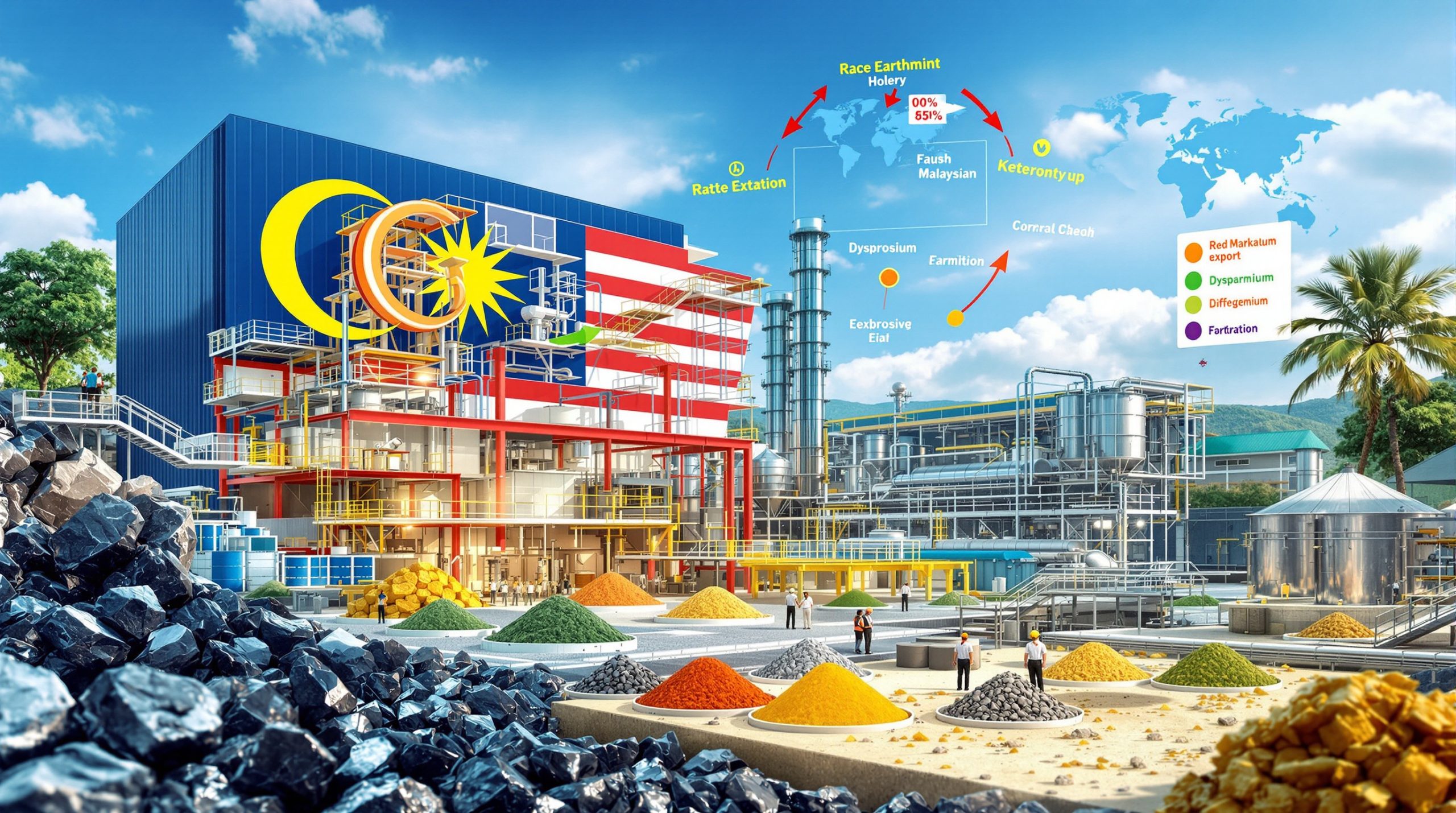What Factors Are Driving Current Magnesium Price Trends?
The magnesium market has been experiencing notable price volatility in recent months, with distinct patterns emerging across production centers. Currently, the transaction price for 99.90% magnesium ingot stands at 16,200 yuan/mt in the main production areas, reflecting a market that initially saw downward adjustment before bottoming out and rebounding.
Market analysts at Shanghai Metal Market (SMM) have identified a recurring weekly cycle in magnesium prices that has persisted for three consecutive weeks: prices tend to weaken early in the week, recover mid-week, and reach a stalemate by Friday. This pattern demonstrates what industry observers call a "vicious cycle" that continues to repeat itself throughout Q2 2025.
Recent Price Movements and Market Sentiment
The cyclical price behavior in the magnesium market reflects two critical market characteristics: persistently low spot inventory and end-users placing orders at reduced prices due to weakened demand. This tension creates the foundation for the observed price fluctuations, where neither bullish nor bearish forces can maintain dominance for extended periods.
"Magnesium prices have entered a 'vicious cycle'… reflecting two market characteristics: low spot inventory and low order-taking prices from traders due to weak demand."
Despite these oscillations, suppliers have shown increasing reluctance to sell at current price levels, supported by an overall positive market sentiment. This supplier hesitancy further constrains an already tight spot market, potentially setting the stage for future price increases if demand conditions improve.
Supply-Side Constraints
The availability of high-quality dolomite, a critical raw material for magnesium production, has tightened significantly due to maintenance shutdowns at major manufacturers in the Wutai area. This supply disruption has forced producers to source alternative materials from regions including Shanxi, Inner Mongolia, and Hubei to maintain production levels.
However, this shift to alternative suppliers has introduced quality consistency challenges throughout the production chain. Magnesium smelters are adapting their processes to accommodate variations in raw material specifications, which can affect the metallurgical properties of the final magnesium ingots.
The market has also witnessed a strategic shift toward order-based production models, with manufacturers scaling output to match confirmed orders rather than maintaining speculative inventory. This approach minimizes producer risk but further restricts spot availability for urgent buyers.
How Is the Magnesium Value Chain Performing?
The magnesium value chain is demonstrating varied performance across its segments, with raw material challenges at the upstream end and divergent demand patterns downstream affecting overall market dynamics.
Dolomite Market Conditions
The disruption in high-quality dolomite production from the Wutai area represents one of the most significant supply-side challenges for magnesium manufacturers. While alternative sources have emerged to fill the gap, the quality consistency issues introduce production variables that can affect final product specifications.
Regional supply shifts have largely maintained overall market stability despite these localized constraints. Producers in Shanxi, Inner Mongolia, and Hubei have increased their output to compensate for the Wutai shortfall, though the variation in mineral compositions requires processing adjustments.
This raw material substitution has created a cascade of quality management challenges throughout the value chain, with producers implementing additional quality control measures to maintain product specifications despite inconsistent inputs.
Magnesium Ingot Production Dynamics
Manufacturers have adapted to current market conditions by implementing order-based production strategies, deliberately limiting available spot inventory. This approach reduces producer risk but creates tight resource availability that forms the foundation for potential price increases.
Production volumes are being carefully calibrated to respond to the cyclical price movements observed in the market. Manufacturers increase output during price upswings while restraining production when prices weaken, creating a self-reinforcing pattern that aligns with the weekly price cycle.
Quality variations have been reported as manufacturers adapt to changing raw material sources. The technical challenges of processing alternative dolomite supplies require ongoing process refinements to maintain product consistency.
Magnesium Alloy Segment Performance
The AZ91D magnesium alloy, a key product in the value chain, currently trades in the range of 17,700-17,800 yuan/mt. Prices in this segment typically synchronize with magnesium ingot fluctuations, though with a modest premium reflecting the added processing value.
Processing fees have stabilized after reaching bottom levels in Q4 2024, providing some relief to alloy manufacturers who had previously seen margin compression. This stabilization indicates a more balanced cost structure emerging in the first half of 2025.
Production volumes in the magnesium alloy segment increased by 7.2% month-over-month in May 2025, demonstrating strengthening output as leading manufacturers gradually release new capacity. Industry analysts expect production to maintain this stability through June 2025, supporting consistent supply to end-users.
What Are the Key Demand Factors Affecting Magnesium Prices?
Demand dynamics across different end-use sectors create complex market forces that directly influence magnesium prices and their impact. The automotive industry represents a growth vector for magnesium, while traditional sectors like steel production show weakening consumption patterns.
Automotive Industry Demand Trends
The automotive manufacturing sector continues to expand its applications for magnesium alloys, driven by both economic and performance considerations. The current price advantage of magnesium over aluminum alloys – a substantial 2,200 yuan/mt spread – significantly enhances the cost-effectiveness of magnesium for weight-sensitive applications.
"With the promotion of industry insiders, medium and large magnesium castings have been gradually launched in the market, showing an upward trend in demand for magnesium alloy."
Medium and large magnesium castings are gaining particular traction in the market as automotive designers recognize the material's advantages in reducing vehicle weight while maintaining structural integrity. This trend represents a significant expansion beyond traditional small component applications.
New product development in the automotive sector continues to support long-term demand growth for magnesium alloys. As vehicle manufacturers pursue electrification strategies that prioritize weight reduction, magnesium's favorable strength-to-weight ratio positions it advantageously against competing materials.
Steel Industry Consumption Patterns
The steel industry, traditionally a significant consumer of magnesium powder for desulfurization processes, has shown weakened domestic demand in recent months. This softening has directly affected the magnesium powder segment, creating downward pressure on prices despite tight supply conditions.
Domestic order performance in this sector is described as "mediocre," reflecting broader challenges in China's steel industry amid production constraints and economic headwinds. The reduced consumption from this sector partially offsets the growth observed in automotive applications.
Overseas order fulfillment for magnesium powder has gradually declined after a strong earlier period, further contributing to the demand weakness in this segment. The combination of softening domestic and international demand has created a cautious market atmosphere among industry participants.
What Is the Current State of the Magnesium Powder Market?
The magnesium powder segment presents distinct market dynamics compared to the ingot and alloy sectors, with particular challenges affecting both pricing and transaction volumes.
Price and Market Conditions
Current magnesium powder (20-80 mesh specification) prices range between 17,400-17,600 yuan/mt, demonstrating a fluctuating but rangebound trend in recent market activity. This price band reflects the balance between supply constraints and weakened demand.
The market has observed both weakened domestic and international demand, creating persistent downward pressure on prices despite the broader supply tightness affecting the magnesium sector. This divergence from the ingot market highlights the segment-specific nature of magnesium prices and their impact across different product categories.
Transaction volume in the magnesium powder segment is described as "mediocre," with market participants adopting a cautious approach to purchasing. This hesitancy limits price discovery and contributes to the rangebound trading pattern observed in recent weeks.
Supply-Demand Balance
Domestic steel industry demand, a primary consumption channel for magnesium powder, has shown significant weakness in recent months. This reduced offtake affects market liquidity and limits producers' pricing power despite tight resource availability.
Overseas order fulfillment has slowed considerably after earlier delivery periods, reducing the export-driven demand that previously supported this segment. International markets have not compensated for domestic weakness, creating a challenging environment for powder producers.
The combined effect of weakness on both supply and demand sides has created a subdued market atmosphere. Neither producers nor consumers demonstrate strong conviction about future price directions, resulting in limited transaction volumes and price movement.
What Market Characteristics Are Creating the Current Price Environment?
The magnesium market exhibits specific structural characteristics that explain the observed price patterns and fluctuations. Understanding these fundamental drivers provides insight into potential future market developments.
Dual Market Forces Analysis
The tension between low spot inventory and weak end-user demand creates the foundation for the observed price fluctuation pattern. Limited available spot material creates upward price pressure, while reduced purchasing interest from end-users pushes for lower order prices.
"The tight spot resources provide a good foundation for a phased increase… while end-user low-price orders cut off sustained increases."
This balance of opposing forces explains the weekly cycle observed in the market: prices decline when demand weakness predominates, then recover as spot scarcity reasserts itself, before reaching equilibrium where neither force can overwhelm the other.
Order-based production strategies further limit sustained price increases despite tight supply conditions. By calibrating production to match confirmed orders, manufacturers avoid building inventory that could exert downward price pressure, maintaining the delicate balance observed in current market conditions.
Industry Capacity Developments
Leading magnesium alloy manufacturers have implemented gradual capacity expansion plans, bringing new production capabilities online in a phased approach. This measured expansion prevents market flooding while positioning producers to capture potential demand growth.
Industry leaders are driving production volume increases, with May 2025 output rising 7.2% month-over-month. This controlled growth supports market stability by preventing both shortages and oversupply conditions that could disrupt the current price equilibrium.
Capacity utilization adjustments represent a key mechanism through which producers respond to market conditions. By scaling production levels based on real-time order flow rather than speculative forecasts, manufacturers maintain the tight spot market conditions that support price stability.
What Are the Future Prospects for the Magnesium Market?
The outlook for magnesium markets depends on evolving dynamics across supply, demand, and pricing factors. Several key trends merit attention when assessing future market developments.
Automotive Sector Growth Potential
The increasing cost advantage of magnesium over aluminum alloys (currently 2,200 yuan/mt) continues to drive expanded applications in the automotive sector. This economic incentive reinforces the material's inherent benefits in weight reduction and performance.
New medium and large castings entering production represent a significant growth vector for magnesium consumption. As these applications move from development to mass production, they create sustained demand growth that could alter the current market balance.
Industry promotion efforts by material suppliers and alloy producers are supporting broader adoption in new vehicle designs. This collaborative approach to market development helps overcome traditional barriers to magnesium adoption, including processing challenges and design conservatism.
The competitive positioning of magnesium against aluminum continues to improve as manufacturers develop enhanced alloys and processing techniques. These innovations address historical limitations while preserving magnesium's fundamental advantages in specific applications.
Supply Chain Resilience Factors
Regional production diversification for raw materials is addressing the dolomite supply constraints that have challenged the industry. By developing alternative sources in Shanxi, Inner Mongolia, and Hubei, the industry reduces its vulnerability to localized disruptions.
Quality consistency challenges require strategic solutions as producers adapt to varying raw material specifications. Manufacturers are implementing enhanced quality control processes and material blending techniques to maintain product consistency despite input variations.
Production methodology adaptations, particularly the shift toward order-based manufacturing, provide flexibility amid fluctuating demand conditions. This approach allows producers to maintain price stability while minimizing inventory risk during periods of demand uncertainty.
Price Outlook Considerations
Tight spot resources support the potential for phased price increases if demand conditions improve, particularly from the automotive sector. The limited available inventory creates a foundation for price appreciation in scenarios where consumption rises.
End-user price resistance continues to limit sustained upward movements, as consumers remain hesitant to accept higher price levels amid economic uncertainty. This resistance creates effective price ceilings that constrain potential rallies despite supply tightness.
The cyclical pattern observed in recent weeks will likely continue without significant demand shifts. The balance between spot scarcity and weak purchasing interest creates self-reinforcing price movements that oscillate within defined ranges.
Raw material supply constraints, particularly for high-quality dolomite, may impact future pricing if alternative sources cannot fully compensate for production disruptions. The quality consistency challenges associated with material substitution create ongoing production cost uncertainties.
Further impacts on magnesium prices may also come from broader market factors including iron ore trends and copper price insights, as these commodities often move in correlation with industrial metals markets.
Disclaimer: The price projections and market outlook presented in this analysis represent informed assessments based on current conditions. Actual market developments may differ significantly due to changing economic conditions, policy shifts, or unforeseen events. Readers should conduct independent research before making business or investment decisions based on this information.
FAQ About Magnesium Market Trends
What is causing the current fluctuation in magnesium prices?
The market is experiencing a balance between tight spot inventory (supporting prices) and weak end-user demand with low-price orders (limiting sustained increases), creating a cyclical pattern of weekly price movements.
How has dolomite supply affected the magnesium market?
Maintenance shutdowns at a major dolomite manufacturer in the Wutai area have tightened high-quality dolomite supply, forcing manufacturers to source from alternative regions and potentially affecting magnesium ingot quality consistency.
What advantages does magnesium alloy have over aluminum in automotive applications?
Magnesium alloy currently offers a price advantage of 2,200 yuan/mt over aluminum alloys, improving cost-effectiveness while providing beneficial properties for automotive applications, driving expanded adoption.
How has magnesium alloy production changed in recent months?
Production increased by 7.2% month-over-month in May 2025, with capacity gradually being released by leading manufacturers and expectations of stable production continuing through June.
What factors might trigger a sustained price increase in the magnesium market?
A significant increase in end-user demand, particularly from automotive or steel sectors, combined with the existing tight spot inventory situation, could potentially break the current cycle and support sustained price increases. Additionally, analysts studying iron ore forecast insights and gold price analysis suggest that broader commodity rallies could provide support for industrial metals including magnesium.
For countries looking to develop their resources, understanding mineral beneficiation opportunities can provide valuable context on how magnesium processing might fit into broader industrial strategies.
Looking for Early Alerts on ASX Mineral Discoveries?
Discovery Alert's proprietary Discovery IQ model delivers instant notifications on significant ASX mineral discoveries, empowering you to identify actionable investment opportunities ahead of the broader market. Explore how major mineral discoveries can generate substantial returns by visiting the Discovery Alert discoveries page and begin your 30-day free trial today.




